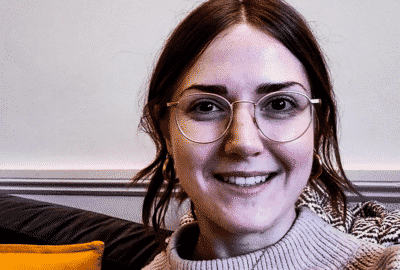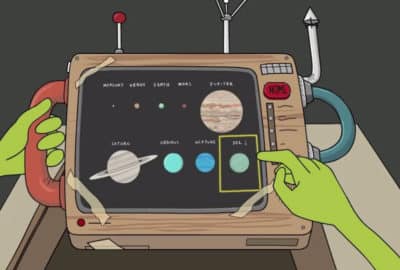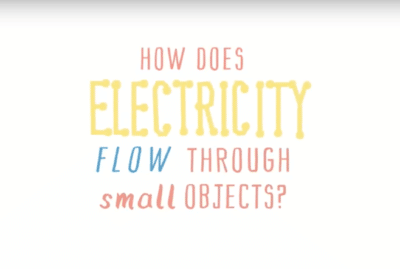A Case of Crystal Clarity
Tuesday 18th Mar 2014, 3.45pm
Usually when we want to see the structure and shape of objects we can look at them with our eyes or, if the objects are quite small, through light microscopes. However, really tiny things like the proteins in our bodies can’t be seen with visible light. Instead we use a technique called X-ray crystallography to determine the structure and shape of these objects.
What is a protein?
Proteins are large biological molecules that perform many vital functions required to sustain life. These functions include transport of molecules such as oxygen in our bloodstream, prevention of infections and disease via antibodies, and repair and maintenance of body tissue such as muscles and skin. Proteins are made up of building blocks called amino acids. The amino acids link together in a sequence, like a string of beads, and finally fold up into a specific 3-dimensional (3D) shape. You can see this in “Another Case of Heart Trouble”. The reason why scientists are so interested in finding the structure of a protein is because its specific 3D structure allows the protein to perform its particular function. Knowing the structure can give clues as to how the protein works to perform its function, which can lead to the development of better medicines or new materials and technologies, and an understanding of disease mechanisms and pathways.
How do we get the protein in the first place?
When we have identified the protein that we want to use for the X-ray crystallography experiment the first challenge is to produce enough of it. There are several ways to do this, but a common mechanism is to insert a section of DNA that codes for the protein into bacteria. As the bacteria grow and multiply, they produce the protein in large quantities. However, it is often the case that the protein of interest is mixed with lots of other proteins and molecules produced by the bacteria. If this happens, the protein has to be extracted and purified before it can be used.
What is crystal?
Common examples of crystals include sugar, salt and diamonds. These are materials formed by a repeating pattern of molecules or atoms that are held together by forces between the atoms. This regular repeating pattern gives the crystal its symmetry, meaning that if we rotate the crystal in a certain way, it will look the same as it did before rotation. The crystal’s symmetry puts a restriction on the number of ways that it can be formed. In protein crystallography this means there are only 65 ways crystals can form, or crystallise. If crystallisation occurs quickly then you generally get lots of small crystals, however if crystallisation is slow then you get very few really large crystals. Crystals can vary in size dramatically depending on the material. Some crystals can grow to be several metres in size where as others, such as those made of proteins can be one millionth of a millimetre.
How do you make proteins crystallise?
The proteins in our bodies look nothing like common crystals such as sugar and salt. However, it’s still possible to manipulate the protein’s environment to encourage it to form an orderly arrangement. Crystallisation occurs when a solution containing the protein is supersaturated, which means the solution has many protein molecules dissolved in it. Over time, the protein molecules can start to precipitate from the solution to form a crystal.
The optimal conditions required for crystallisation vary for different proteins, and currently there is no way of knowing beforehand which conditions will work for a new protein. For this reason crystallisation is often the bottleneck of the entire X-ray crystallography process. It can take years and many attempts before the correct conditions are found.
Why do we shoot our crystals with X-rays?
X-rays are at the core of X-ray crystallography. This process provides the majority of the experimental data required to determine the atomic structure of the molecules within the crystal. When X-rays are passed through the crystal, the individual X-ray photons (small packets of light) interact with the electrons in the protein atoms causing the X-rays to diffract in many different directions.
To get a full 3D picture of the protein, the crystal needs to be bombarded with X-rays from all directions. This is the why the crystal is rotated during the experiment. As it rotates, the diffracted X-ray photons are collected on many detector images. The directions of diffracted photons are not random, but are determined by the symmetry and structure of small repeating units in the crystal known as unit cells. The intensity of the reflections recorded on the diffraction images give information about the distribution of electrons in the atoms making up the crystal. The final pieces of information required for the 3D picture are the phases, which are a specific property of the diffracted waves. However the phase cannot be extracted from the diffraction images which leads to the infamous “phase problem”. Over the last 100 years various techniques have been established to experimentally determine the phases to give us the complete set of information required to solve the 3D protein structure.
How do we get the 3D structure of the protein?
After the X-ray crystallography experiment and a bit of experimental ingenuity, all of the information required to solve the protein structure should be present. However, all this information has to be transformed to create a 3D picture of the protein. A mathematical operator known as a Fourier Transform is applied to the data, which shows how the electron density is distributed within a unit cell. This then becomes a puzzle for the crystallographer – they have to use all the known information about the protein to fit a model of it into the areas where the electron density has been found. This is very difficult because there are constraints on this problem, such as the sequence of the amino acids in the protein.
All in all, X-ray crystallography is a very complicated and labour-intensive technique. Without it, however, our understanding of DNA, insulin and other important molecules would be limited and the World would be a very different place.
Further information:
Teaching Resources:
KS4: Crystal Quest (contact us for info)
KS5: X-ray Crystallography (contact us for info)
Find out more:
Royal Institution animation celebrating 100 years of crystallography – YouTube video
International year of crystallography website (2014)
“What is a protein?…” – YouTube video
Online database of protein structures: The Protein Databank
Diamond Light Source Brought to Light – video
Picture Book of Fourier Transforms
The fascinating world of crystallography – video
Crystallography podcasts from the University of Oxford
Royal Institution Lecture about Crystallography – Prof Stephen Curry
Crystallography Course given at Cambridge





